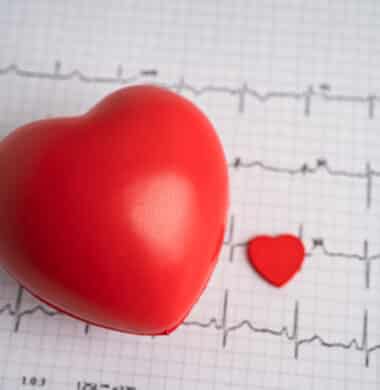How We Are Making a Difference,

If you go online to research heart palpitations, you might find more technical language to describe what you’re experiencing. In performing the search, you might come across terms describing irregular heartbeats, including “arrhythmia” and “dysrhythmia.” You might wonder what’s the difference between these two terms.
There is no practical difference between these terms. Arrhythmia and dysrhythmia are both used to describe the same condition: an irregular heartbeat. As the first practice in the nation to open a comprehensive Arrhythmia Clinic, we understand all the dimensions of these phenomena. So why do we have these two terms that refer to the same thing? History. We’ll look a little bit at the two words, then at the history that gave us two words for the same thing.
Etymology of Arrhythmia vs. Dysrhythmia
Arrhythmia is a variation of an ancient word. The influential Galen of Pergamon, writing in the second century AD, used the word arrhythmia to describe dangerous pulse irregularities. The word is formed by combining the prefix “a-” (meaning none) with “rhythmos” (rhythm), then changing the ending to “-ia” to make it clear that it describes a condition. Although the condition was described long ago, doctors didn’t have the tools to closely measure heartbeats for several centuries until the development of accurate watches in the 18th century. With increased focus on the condition, the word arrhythmic enters the English language in 1833, according to Merriam-Webster, with arrhythmia following a few decades later.
Dysrhythmia, on the other hand, is a more modern word. It’s formed by using the prefix “dys-,” which means abnormal or bad. It first appeared in 1909, according to Merriam-Webster, and seems to have no ancient provenance to support it. Arising shortly after the development of the ECG/EKG, the term seems to be linked to appearance of irregular rhythms on the device’s readout.
The Arrhythmia/Dysrhythmia Debate
These two terms seem to have coexisted peacefully until the fractious 1960s. It seems that in 1967, a group of Young Turk doctors decided that they should throw out the widely accepted term arrhythmia because it was inaccurate. They said that because it literally means “no rhythm,” it was inaccurate to describe heart conditions in which people did have heart rhythms, but their rhythms were irregular or unhealthy. The better term, they said, was dysrhythmia, because it literally means abnormal or bad rhythm.
Proponents for the term arrhythmia countered that the definition as used superseded the literal definition, and that there was no need to change terms.
Since then, doctors have traded jabs about the terms, with everyone choosing the term they prefer most. In 2015, the arrhythmia faction tried to declare the debate over, claiming that no one uses dysrhythmia anymore. However, a search of recent journal articles and chapters shows that, at least as recently as 2022 people are still using dysrhythmia as their preferred term.
We Treat Both Arrhythmias and Dysrhythmias

 At South Denver Cardiology, we’re not picky about terminology. We’re used to taking people as they come and hearing their descriptions of symptoms. We’re prepared to listen and translate your subjective descriptions into our understanding of heart conditions.
At South Denver Cardiology, we’re not picky about terminology. We’re used to taking people as they come and hearing their descriptions of symptoms. We’re prepared to listen and translate your subjective descriptions into our understanding of heart conditions.
Whether you worry that you might have arrhythmia or dysrhythmia, we can help treat your condition. We offer comprehensive treatments for a wide range of arrhythmia/dysrhythmia conditions, including:
Atrial fibrillation, the most common type of arrhythmia. We offer numerous atrial fibrillation treatment options, including the first-in-the-region use of pulse field ablation. In atrial fibrillation, the upper heart chambers beat out of sync with the lower chambers of the heart. Sometimes variations of this condition are described as “atrial flutter.”
Atrial premature complex (PAC) is how we describe premature beats of the upper heart chambers.
Atrial paroxysmal tachycardia (PAT) is when your heart beats faster because the upper chambers are driving a faster rhythm.
Ventricular tachycardia is when the lower chambers are driving a faster heart rhythm.
Ventricular fibrillation is when irregular beating of the heart’s lower chambers leads to a quivering of the chambers incompatible with life.
Ventricular premature complexes (PVC) are mistimed beats that arise from within the lower heart chambers. These can arise from stress, although they can also be linked to heart disease.
Sinus bradycardia occurs when the sinoatrial (SA) node, which helps regulate heartbeats, fires slowly.
Heart block is when signals telling your heart to beat are blocked so they are either slow to reach the lower chambers of the heart or may not reach them at all.
Why Choose South Denver Cardiology for Your Arrhythmia
If you are experiencing symptoms like heart palpitations or if you’ve been diagnosed with heart arrhythmia (or dysrhythmia), it’s important to get appropriate care to avoid the development of serious complications. At South Denver Cardiology Associates, we would be proud to help you manage your arrhythmia.
We were the first cardiology practice in the nation to establish a dedicated Arrhythmia Clinic. We offer a comprehensive suite of programs for dealing with arrhythmia at all levels of intervention, from simple lifestyle modifications to pioneering treatments. We also provide detailed education, so you can understand what treatment options are best for your particular type of irregular heartbeat. Although heart palpitations can seem scary, we’ve helped many people enjoy healthy, happy, active lives for years, even decades, with heart arrhythmias. Let us help you.
Please contact us today to schedule an appointment at a South Denver Cardiology Associates location in Littleton, Englewood, Castle Rock, Parker, or Denver.
Sign Up
As with any health concerns, your specific treatment program should be discussed thoroughly with your primary care physician as well as any specialists who may need to be consulted – like a cardiologist.
- The Renal Warrior Project. Join Now
- Source: https://southdenver.com/arrhythmia-vs-dysrhythmia/
